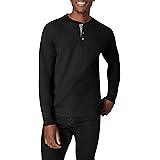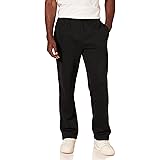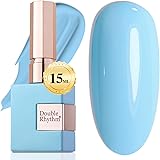The streetwear landscape is undergoing a seismic shift, with a staggering 70% of existing brands struggling to meet the new, elevated standard of quality and creative execution. The days of making “quick money” are long gone, replaced by a hyper-competitive arena where only the most innovative and strategically minded brands will survive the next 18 months. As the video above compellingly outlines, success in modern streetwear now hinges on unparalleled **art direction** and a sophisticated content playbook. This article expands on those crucial insights, offering a deeper dive into the strategies driving today’s leading brands.
From the “Supreme Generation” to the luxury crossover, and now to the dominant “Instagram and TikTok world,” streetwear is constantly evolving. Content is better, designs are sharper, and the bar for market entry—and staying power—has never been higher. Brands must not only deliver exceptional products but also craft compelling visual narratives that resonate across diverse digital platforms. Let’s unpack the dynamic strategies that define the cutting edge of **modern streetwear art direction**.
1. The New Era of Streetwear: A Creative Crossroads
Streetwear is no longer just about coveted drops or exclusive collaborations; it’s a battleground for attention and authenticity. The speaker highlights a critical juncture: the move from established titans like Supreme and Palace to an ecosystem dominated by Instagram and TikTok-native brands. This shift places immense pressure on new and old players alike to deliver content that not only looks good but also converts engagement into sales.
The marketplace is saturated with options, making it difficult for brands to distinguish themselves. Today, even a candle brand’s merchandise can boast a wash and feel superior to a significant portion of streetwear labels. This relentless competition is, surprisingly, a catalyst for innovation. It forces brands to push the boundaries of design, marketing, and community building, leading to truly interesting and boundary-pushing creative work.
2. Mastering Visual Storytelling: The Photography-Driven Standard
A significant aspect of compelling **modern streetwear art direction** lies in its visual storytelling, often spearheaded by photography. House of Errors serves as a prime example of a brand that has leveraged visual imagery to ascend rapidly within the industry. Their unique approach demonstrates how powerful visuals, combined with standout apparel, can create an unparalleled brand universe.
Their photography-driven campaigns, like the “Black Friday market crash” shoot, became instant benchmarks. These shoots are not merely product displays; they are meticulously crafted scenes, playing with perspective, scale, and abstract elements. Recreating iconic moments, such as the famous Zidane scene, elevates their visuals from simple lookbooks to artistic statements. For any brand aspiring to break through, House of Errors sets the standard for creative stills and conceptual execution, where every image reflects a unique brand identity.
3. The Art of Virality: Conceptual Video Content
While photography sets a high bar, conceptual video content is another potent force in **modern streetwear art direction**. Cold Culture perfectly illustrates the power of virality to amplify a brand’s message. Their “stop and frisk” video wasn’t just a fit check; it was a culturally resonant skit that became a widespread social media trend, demonstrating the impact of a well-executed concept.
This brand prioritizes quality conceptual videos over a multitude of quick TikToks, understanding that an impactful, shareable narrative can achieve exponential reach. Their relentless pursuit of conceptual execution across every reel, from explosion pans to meme variations, positions them at the forefront of viral content creation. For brands aiming to capture fleeting social attention, the lesson is clear: invest in ideas that are entertaining and shareable enough to permeate cultural conversations.
4. Strategic Advertising: The Paid Content Playbook
Not every brand finds its path to success through organic virality. Elwood offers a compelling counter-narrative, proving that a robust paid advertising strategy can be a dominant force in **modern streetwear art direction**. While their organic content may not consistently go viral, their strength lies in creating content specifically optimized for ads.
Elwood’s approach involves producing numerous variations of “fit check” walk-throughs and compilation videos designed to perform exceptionally as Spark ads, Instagram ads, and Meta ads. Their success isn’t measured by organic likes but by ad performance, where concepts like a simple fit check can garner hundreds of thousands of views. This strategy is particularly effective for “elevated basics” – wardrobe staples that rely on lifetime value rather than statement pieces. By designing advertising to seamlessly blend with organic-looking content and featuring personalities, Elwood has become an “underrated money printer,” prioritizing scalable reach over unpredictable organic engagement.
5. Curated Worlds: Art Direction for Luxury & Legacy
Brands like Aimé Leon Dore (ALD) and About Blank carved their niche by meticulously building a luxurious brand perception through consistent, high-quality art direction. ALD, in particular, created a “luxury brand out of nothing” by employing recurring environments, familiar models, and a distinct aesthetic executed at a very high level. Their content emphasized curated simplicity, allowing the garments to speak for themselves within an aspirational context.
However, the speaker points out that this specific playbook is becoming less effective for new brands in the current era. The customer base for this aesthetic, often associated with “tech bros” or junior professionals, has shifted, making it harder to replicate ALD’s initial success. About Blank, a more accessible version of this image-focused approach, is also now pivoting their content strategy, indicating the end of an era where straightforward, image-focused content alone guaranteed resonance. The lesson here is that even successful foundational strategies require adaptation to remain relevant.
6. The Genius of Positioning: Branding Beyond Design
Sometimes, a brand’s most powerful asset isn’t just its designs or its art direction, but its name and strategic positioning. Satoshi Nakamoto stands out as a “once in a decade” branding play. They tapped into the cultural phenomenon of Bitcoin, adopted a name with profound resonance in that world, and coupled it with a Japanese brand identity to lend credibility. This allowed them to position their luxury-level, high-price-point items to a counterculture audience.
While their photography is solid, it’s the intellectual and cultural positioning that truly drives their success. It’s a “signaler brand” – an “if you know, you know” ethos that doesn’t necessarily seek massive social media virality, as that might detract from its exclusivity. This strategy highlights the importance of cultural intelligence and seizing timely opportunities to build a brand identity that transcends mere aesthetics.
7. Modernizing Legacy Playbooks: Adrenaline and Iconography
Brands like TwoJeys and Nude Project demonstrate how to infuse an “old playbook” with new energy for the digital age. They effectively take the Stüssy template – iconography, beach culture, and a distinct lifestyle – and elevate it for social media consumption. Shooting on film, creating distinct objects, and collaborating with artists, they create a vibrant, younger, and more appealing Euro-centric aesthetic.
A key differentiator is their focus on “adrenaline-focused content,” such as the viral cliff-diving video that amassed 364,000 likes. By upping the intensity and tailoring content for algorithms, they’ve successfully modernized a classic approach. This strategy underlines that even derivative concepts can thrive if they are executed with superior visual appeal, amplified intensity, and a deep understanding of current social media dynamics.
8. Creator-Led Content: The Skit-Based Approach
In the evolving landscape of **modern streetwear art direction**, brands like Broken Planet and Derschutze have pioneered creator-led, skit-based content strategies that are both cost-effective and highly engaging. Broken Planet employs a “gang of young people” who travel to exotic locations like Paris or Morocco, creating skits, mobbing around, and lip-syncing to trending audio while showcasing the clothes.
This iPhone-shot content generates a massive volume of relevant, authentic material across multiple creator and brand pages. Similarly, Derschutze focuses on recurring creators who produce humorous skits about fashion culture and clothing dynamics. What makes Derschutze’s approach particularly ingenious is its regional localization; dedicated accounts like “Derschutze London” feature local creators making location-specific content, feeding localized algorithms and supporting physical stores. This strategy effectively replaces expensive, high-budget shoots with an ongoing stream of relatable, entertaining content that is inherently shareable.
9. The Comprehensive Streetwear Creative Playbook
Bringing together these diverse strategies, a comprehensive playbook for **modern streetwear art direction** and content success emerges. Brands must consider a multi-faceted approach to stand out:
-
Spectacles with Production: Create real-life, shareable moments like pop-ups, installations, or unique brand activations that people want to photograph and generate content around. These “IRL experiences” provide tangible touchpoints that can then be documented and amplified online.
-
Elevated E-commerce Style: Invest in high-quality product photography and videos for your product pages. Your e-comm visuals are often the first detailed interaction a customer has with your product, so they must be impeccable and clearly convey the garment’s appeal.
-
Strategic Social Creators: Integrate social media creators into your content strategy. This might involve employing a core team, as Broken Planet does, or collaborating with a network of influencers to generate consistent, authentic, and algorithm-friendly content daily.
-
Conceptual Lookbooks: Beyond simple product shots, develop conceptual lookbooks for each launch. These should tell a story, set a mood, and align with your brand’s overarching narrative, often accompanied by corresponding e-commerce photography.
-
Holistic Distribution: Combine strong organic content with targeted paid advertising. Great organic posts can serve as “fuel” for ad campaigns, maximizing their reach across multiple platforms like Instagram, TikTok, and Meta, effectively expanding your total available market.
-
Innovative Social Concepts: Don’t just post; develop concepts for social media that drive engagement. Whether it’s virality-focused memes, entertaining skits, or high-adrenaline content, every piece should have a clear purpose and a strong hook to capture attention.
-
Curated Environments: Carefully select and utilize filming environments that contribute to your brand’s story. This could be a recurring, recognizable backdrop, as seen with ALD, or constantly changing exotic locations, like Broken Planet’s travel-based content, to evoke a specific lifestyle.
-
Localized IRL Experiences: As brands scale, integrate real-life experiences with localized content. A pop-up in a specific city, for example, should be promoted with content that resonates with the local audience, creating a stronger regional connection and driving engagement. The success of **modern streetwear art direction** now demands not just amazing clothes, but also next-level creative and impeccable execution across all touchpoints.
The standard for success in modern streetwear is exceptionally high. Brands must not only offer amazing products but also craft compelling narratives and visual experiences that stand out in a saturated market. Whether through groundbreaking photography, viral video content, strategic advertising, or creator-led campaigns, the ability to innovate in **modern streetwear art direction** is paramount. These insights, further explored in the speaker’s creative strategy toolkit and upcoming training, empower brands to navigate this challenging yet exciting niche, ensuring not just survival, but true distinction.











